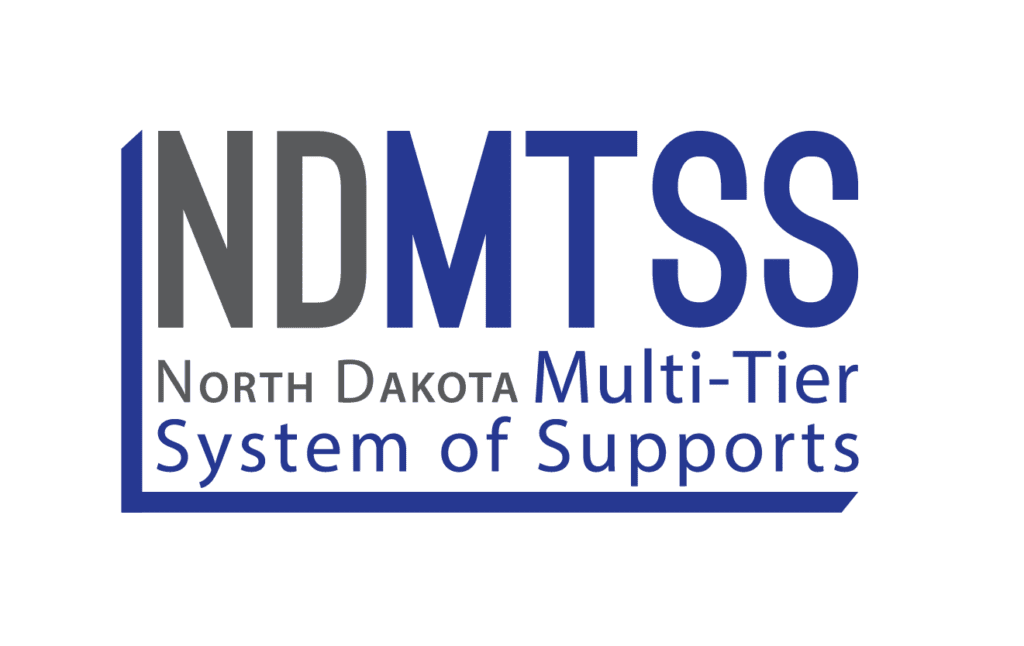IF NDMTSS IS EVERYTHING, WHERE DO WE START?
North Dakota’s Multi-Tiered System of Supports (NDMTSS) is a framework designed through the lens of continuous improvement to guide school districts, schools, and all educators to ensure each and every student has access to learning experiences that enhance their educational outcomes. Our mission is to empower schools to support and prepare ND students for success!
If MTSS is everything, where do we start?
As an NDMTSS/SEEC Teaching & Learning team, we model this in our own practice. We are continually digging into all things assessment, instruction, curriculum, and effective learning to deepen our own understanding and make connections to our “other work” – standards-based learning, effective math instruction, positive behavior intervention & supports, targeted & comprehensive school improvement, paraeducator supports, effective reading instruction, classroom management, and student & family engagement, etc. – to ensure clarity. But even in these conversations, as we understand better that a multi-tiered system of supports (MTSS) is truly everything, the time and space for the deeper conversations is so essential.
Recently, we have been unpacking a new resource, Untangling Data-based Decision Making: A Problem-Solving Model to Enhance MTSS by Harlacher, Potter, and Collins, 2024. The authors offered an excellent definition of MTSS (p. 15), which can point us in the right direction of where to start:
A multitiered system of supports is a framework that organizes and aligns the multiple systems, practices, and assessment procedures within a school to create greater overall efficiency and effectiveness (Collings & Harlacher, 2023; McIntosh & Goodman, 2016).
It is based on the philosophy that all students can learn, and that educators can adjust alterable variables within the instruction, curriculum, and environment to improve outcomes for all students.
It is a proactive and prevention-based schoolwide framework in which data are used in an iterative manner to match and monitor the level of supports students receive (Jimerson et al., 2016).
Further, it is designed to improve the overall quality of the school in that it aims to have most students (for example, at least 80 percent), meet grade-level standards with core instruction and supports alone.
In doing so, critical resources and supports can be sufficiently allocated for students who need more than just core support to reach grade-level standards.
As such, it’s a systemic model designed to improve the overall effectiveness of the school, as well as a system to improve outcomes for each individual student (McIntosh & Goodman, 2016; Sugai & Horner, 2006).
Throughout this work, we ask questions and work collaboratively as teams to find answers and take action, starting with the essential questions:
Where are we now? Where Are we going? How do we close the gap?
While the definition above closely aligns with our own NDMTSS definition, I appreciate the emphasis on two things that I would identify as the starting place and focus for schools – MTSS “organizes and aligns the multiple systems, practices, and assessment procedures within a school to create greater overall efficiency and effectiveness” and “it aims to have most students, at least 80%, meet grade-level standards (and behavior expectations) with core instruction and support alone.”
Lofty goals, but often as schools begin NDMTSS trainings we take the time to “audit” their system – all of the systems, practices, and assessment procedures currently in place – and have the healthy conversation about if we are seeing the results of having 80% of our students proficient with core instruction alone! If not, it is time to get to work! It feels a lot like cleaning multiple closets all at once. We pull everything out and it gets messy! But as we sort, classify, categorize, abandon, and reorganize for a more efficient and effective system. As school teams gain greater insight into their current reality (organization & alignment) and desired state (Student outcomes 80%), schools who engage in NDMTSS trainings Learn, Empower others, and Grow outcomes for students, staff, and their school culture – It really is everything!

